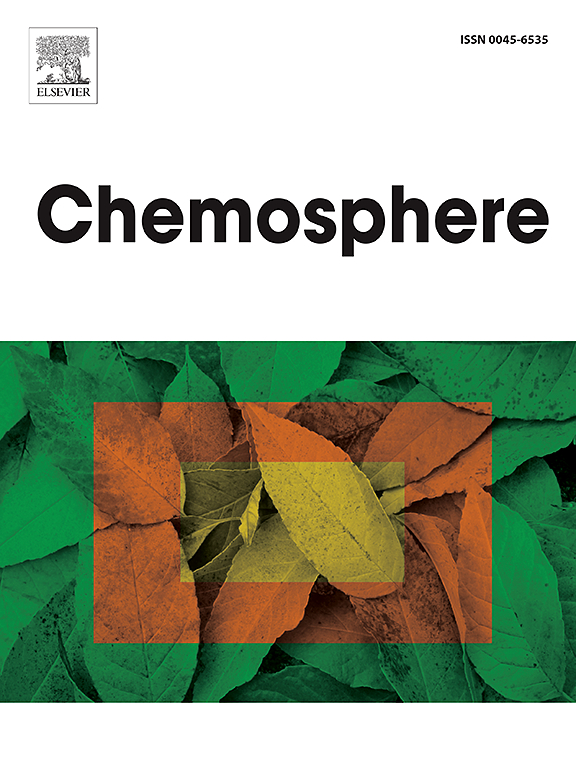Electrochemical oxidation for the rapid degradation of emerging contaminants: Insights into electrolytes and process parameters for phytotoxicity reduction
IF 8.1
2区 环境科学与生态学
Q1 ENVIRONMENTAL SCIENCES
引用次数: 0
Abstract
Atrazine (ATZ), carbamazepine (CBZ), and sulfamethoxazole (SMX) are contaminants of emerging concern (CECs) commonly detected in water sources, posing a risk to health, sanitation, and the ecosystems. This study evaluates the degradation, mineralization, and phytotoxicity reduction of a solution containing these three CECs using an electrochemical advanced oxidation process (EAOP). Key operational parameters – pH, flow rate (Q), current density (j), and type and concentration of supporting electrolytes (NaCl and Na2SO4) – were systematically investigated. The results showed that pH had minimal impact on the process. Higher flow rates (250 L h−1) improved mineralization due to enhanced mass transfer to •OH on the anode surface. However, the flow rate had less effect on degradation, as the dominant degradation mechanisms involved chlorine- or sulfate-based oxidants. Current densities of 1 and 10 mA cm−2 produced the most favorable results, leading to efficient degradation and mineralization, along with satisfactory mineralization current efficiency (up to 47 %) and energy consumption values (91,76–3142,88 kW h kg−1). When NaCl was used as supporting electrolyte, the degradation of CECs was twice as fast as with Na2SO4, achieving over 88 % degradation in 5 min and 40 % mineralization within 60 min. While chlorinated and sulfate species enhance process efficiency, excessive electrolyte concentration should be avoided to prevent scaling and •OH scavenging. Phytotoxicity tests with Allium cepa revealed an unexpected reduction in toxicity in samples treated with NaCl, suggesting that Na2SO4 may be more phytotoxic under the tested conditions.

求助全文
约1分钟内获得全文
求助全文
来源期刊

Chemosphere
环境科学-环境科学
CiteScore
15.80
自引率
8.00%
发文量
4975
审稿时长
3.4 months
期刊介绍:
Chemosphere, being an international multidisciplinary journal, is dedicated to publishing original communications and review articles on chemicals in the environment. The scope covers a wide range of topics, including the identification, quantification, behavior, fate, toxicology, treatment, and remediation of chemicals in the bio-, hydro-, litho-, and atmosphere, ensuring the broad dissemination of research in this field.
 求助内容:
求助内容: 应助结果提醒方式:
应助结果提醒方式:


